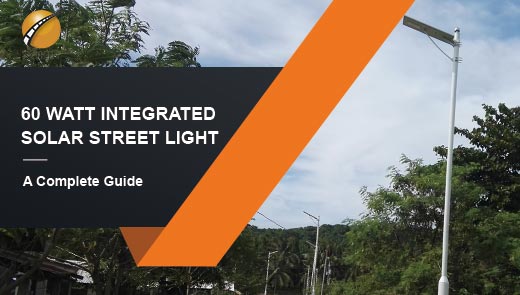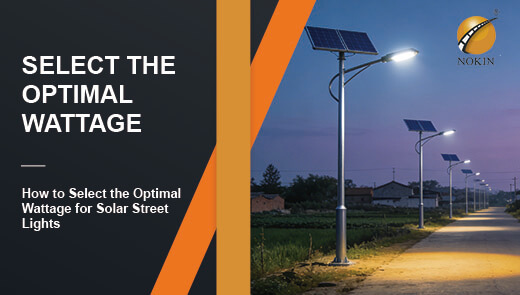How To Properly Use All-in-one Solar Light In Winter
The All-in-One Solar Street Light is unique in the market with its slim profile, lightweight structure and elegant appearance. It integrates LED light, lithium battery, intelligent MPPT controller and high-efficiency solar panel in a compact design, which is not only easy to install and maintain, but also effective in preventing vandalism. These street lights are highly sought after in areas where electricity is scarce or remote from the grid, especially in coastal areas, and have become a popular green technology in the sunny “sunbelt” countries of the world. However, when it comes to winter, some practical tips are needed to ensure its normal operation.
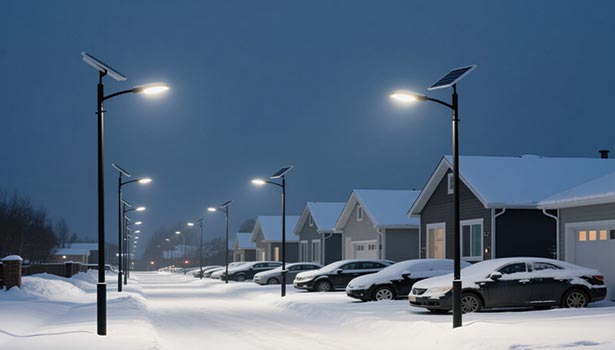
Can integrated solar street lights be used outdoors in winter?
Most all in one solar street lights are weather resistant and can withstand rain, snow and low temperatures. However, the degree of durability varies from product to product depending on quality and design, so be sure to check the weathering parameters provided by the manufacturer before use.
The rechargeable batteries built into street lights are sensitive to temperature extremes. Cold weather can diminish the battery's ability to hold a charge, resulting in shorter hours of illumination at night. High-quality solar streetlights are often equipped with batteries that perform better in cold temperatures, but the effects of temperature cannot be completely eliminated.
Additionally, snow and ice buildup is a major challenge during the winter months. Once the solar panels are covered with snow and ice, sunlight cannot reach the solar cells, which will affect the battery charging efficiency. Therefore, timely removal of snow and ice from solar panels is crucial to ensure their proper charging.
All in one solar street lights inspection before winter
Before winter comes, it is necessary to carry out a comprehensive inspection of the integrated solar street light. First of all, check whether the batteries, wires and LED beads are intact and whether there are signs of damage or aging. If any damage or failure is found, it should be replaced or repaired in time, so as to avoid small problems evolving into big failures in bad weather, and to ensure that the street light is in the best condition to meet the cold winter.
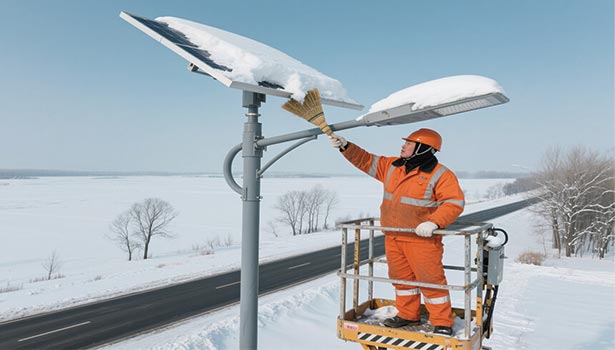
Keep solar panels clean
The cleanliness of the solar panel directly affects the charging efficiency. In winter, the weather is cloudy and the air is dusty, so the surface of solar panels is very easy to accumulate dust. In addition, the residual snow and ice residue after snow will also adhere to the panel. Therefore, solar panels need to be cleaned regularly and can be gently wiped with a soft brush or a clean damp cloth. If cleaning is neglected for a long time, dust and dirt will accumulate in large quantities, seriously affecting the power generation effect.
Adjust the panel angle
The sun's altitude angle is lower in winter, and the angle of incidence of sunlight changes. In order for the solar panel to fully receive sunlight, you need to adjust its angle at the right time. Moving the street light to a south-facing position can maximize the hours of light. At the same time, fine-tune the panel tilt angle according to the local latitude and the sun's trajectory to keep the solar panel perpendicular to the sunlight, thus enhancing the charging efficiency.
Prevent equipment from freezing
In cold regions, take extra care when choosing solar panels. Prioritize products with good processing quality, fewer seams and fewer welding points. These panels have a tight structure and better moisture resistance, which can effectively prevent freezing. Due to frequent rain and snow in cold regions, once the street light freezes, the solar panel cannot absorb solar energy normally, resulting in the street light not working. If the panel is found to be frozen, timely measures should be taken to thaw and repair to avoid permanent damage.
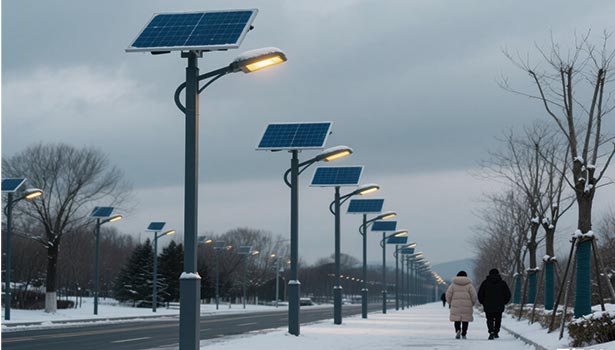
Installation location selection
The installation location has a significant impact on the performance of the all in one solar street light. Choose an area with sufficient sunshine throughout the day and no buildings or trees in the shade. Avoid installing the street light under the shadow of tall buildings or next to large trees, otherwise it will significantly reduce the time the solar panels receive light. Suitable installation location can ensure that the street light can fully absorb sunlight, improve charging efficiency and prolong service life.
Special circumstances and storage program
If you are in an area with severe winter weather or worried about continuous rainy days affecting the performance of the street light, you can choose to store it indoors. Before storing, fully charge the batteries, then remove the batteries and store the street light in a cool and dry place. In the spring of the following year, take out the street light, reinstall and install the batteries, check the status of the equipment and then continue to use.
Summary
Winter is a critical period to test the performance of all in one solar street light. By doing a good job of equipment inspection, keeping clean, adjusting the angle, preventing freezing, reasonable installation and proper handling of special situations, the normal operation of the street light can be effectively guaranteed. By following these practical tips, we can not only give full play to the environmental advantages of all in one solar street lights, but also provide continuous and stable lighting service for our life.

